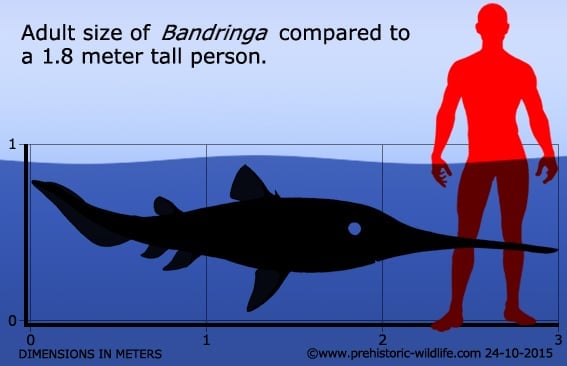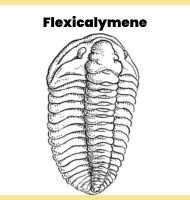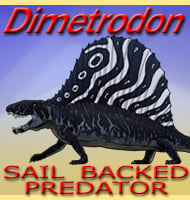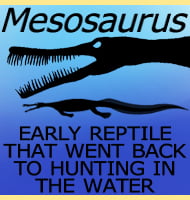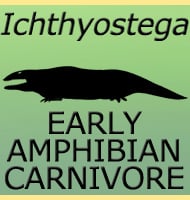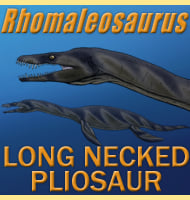In Depth
Many prehistoric sharks look just plain weird, and Bandringa is certainly no exception. The immediate stand out feature of this shark is the long spoonbill shaped snout that accounts for a good portion of the sharks total length. Some fish we know today do have such a snout, and they use it for digging out small aquatic animals that are otherwise buried in soft sediment. With this comparison in mind it is easy to envision Bandringa sharks hunting in a similar manner. Indeed, the mouth of Bandringa is orientated to face more downwards as opposed to forwards like in most other sharks.
Bandringa was first named in 1969 by R. Zangerl with the type species as B. rayi. Then ten years later Zangerl named a second species, B. herdinae. What stood out about these species was that at up to three meters in length the type species B. rayi was much larger and living in freshwater. B. herdinae however was tiny in comparison, only about ten to fifteen centimetres in length and living in saltwater. Then in 2012 a new study by Lauren Cole Sallan and Michael I Coates was penned and later published online in 2014, and this would change a great deal about what we thought we knew about the Bandringa genus.
The main focus of the study by Sallan and Coates was the marine (salt water) specimens of B. herdinae. For them the problem with the species was not the small size of the individuals, but the simple observation that all known specimens of B. herdinae were either juveniles or egg cases, there were no known adults. Then in looking at B. rayi, only adults had been attributed to the type species. Then by charting the known geographical locations for fossils, the result was quite simple, Both B. rayi and B. herdinae are in fact one and the same species. Immediately this means that Bandringa herdinae is now a synonym to Bandringa rayi, but this also reveals a very interesting and startling theory about this shark.
Adults of Bandringa have so far always been found in freshwater deposits. In itself this is not unusual, many prehistoric sharks lived in freshwater, and even today some cartilaginous fish, including the bull shark (Carcharhinus leucas) and some stingrays are known to enter and swim up freshwater river systems. But then why are the juveniles only found in freshwater? The simple answer is that this is one of the earliest confirmed cases of sharks actually migrating to a nursery ground.
It is not unknown for sharks to migrate to specific areas in order to lay eggs or give birth to live young, it is after all behaviour that is well documented. Even the fossil record supports this behaviour with juvenile teeth of the giant shark C. megalodon being much more common than adult teeth in some shallow water environments such as around central America and off the coast of Maryland, USA. What is unusual here though is that the adults that are living in freshwater are choosing to migrate from freshwater into saltwater.
Freshwater to saltwater migration is known in some fish, best known of which is the European eel (Anguilla anguilla) which starts out life in the Sargasso Sea before migrating into freshwater rivers and lakes where they live for about five to twenty years before finally returning to the Sargasso Sea to spawn. However up until the study by Sallan and Coates such migration was completely unknown for sharks. Eels are known to die in the Sargasso after spawning, but this may not have been the case for Bandringa. Firstly sharks are not known for dying en masse after laying eggs, and the lack of adult fossils in with the juveniles would indicate that adults would return to freshwater ecosystems after egg laying.
One question to be asked is why would Bandringa choose to establish nursery grounds in saltwater? Well so far all juveniles of Bandringa were in shallow coastal waters which would provide a number of benefits for rearing young sharks. Shallow coastal waters usually have a proportionately broad abundance of life with an almost unlimited number of small aquatic animals, from worms, to shrimp and even some kinds of fish buried in the soft sandy sediments. When an animal like a shark is young large amounts of small animals is exactly what you need to grow large fast. Coastal waters also restrict the movements of larger predators enabling a greater chance of survival for small juveniles. Coastal waters also tend to be much warmer, being more easily heated by the sun and perhaps even being warmed by oceanic currents, raising metabolic rates and increasing the rate of growth than what would have been experienced in colder rivers systems.
The same soft sediments that would have contained large amounts of prey animals for juvenile Bandringa have also offered a high level of preservation in some of these juveniles with even soft tissues being preserved. These have helped confirm the presence of some features such as the downward facing mouth, as well as revealing new ones not preserved in adults due to different fossilisation factors not preserving them. These include small needle-like spines on the head and cheeks, but also the presence of a vast array of electro receptors that are on the snout. This confirms that like in other sharks with long snouts, the snout of Bandringa primarily served as a sensory organ detecting buried prey, before then being used to dig them out.
The fact that we now know that one genus of shark migrated from freshwater to saltwater to raise young in a nursery ground now raises the question, how many other ‘freshwater’ sharks migrated to salt water nursery grounds?
Further Reading
- Bandringa rayi: A New Ctenacanthoid Shark form the Pennsylvanian Essex Fauna of Illinois. - Fieldiana Geology 12:157-169. - R. Zangerl - 1969. - New Chondrichthyes from the Mazon Creek fauna (Pennsylvanian) of Illinois. - Mazon Creek Fossils 449-500. - R. Zangerl - 1979. - The long-rostrumed elasmobranch Bandringa Zangerl, 1969, and taphonomy within a Carboniferous shark nursery. - Journal of Vertebrate Paleontology vol 34, issue 1 - Lauren Cole Sallan & Michael I Coates - 2014.
